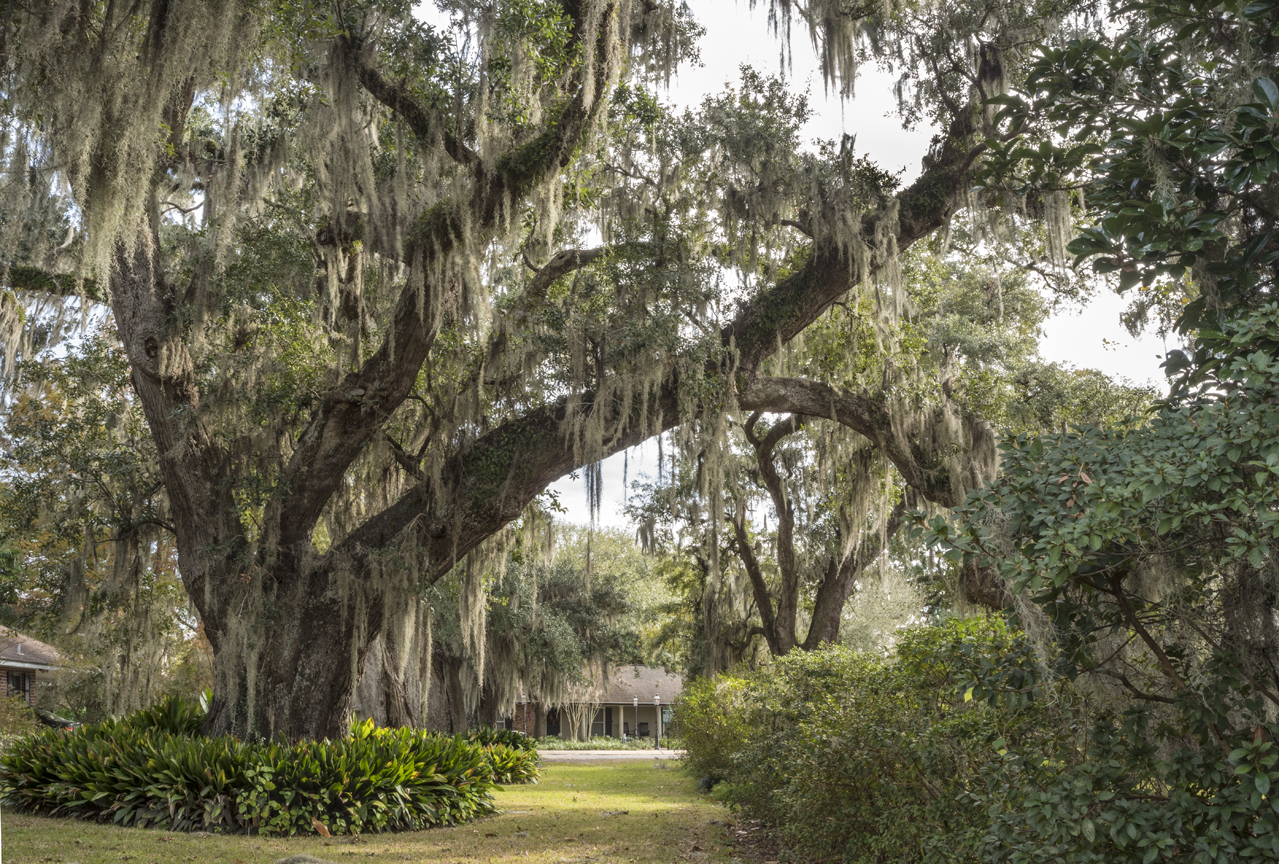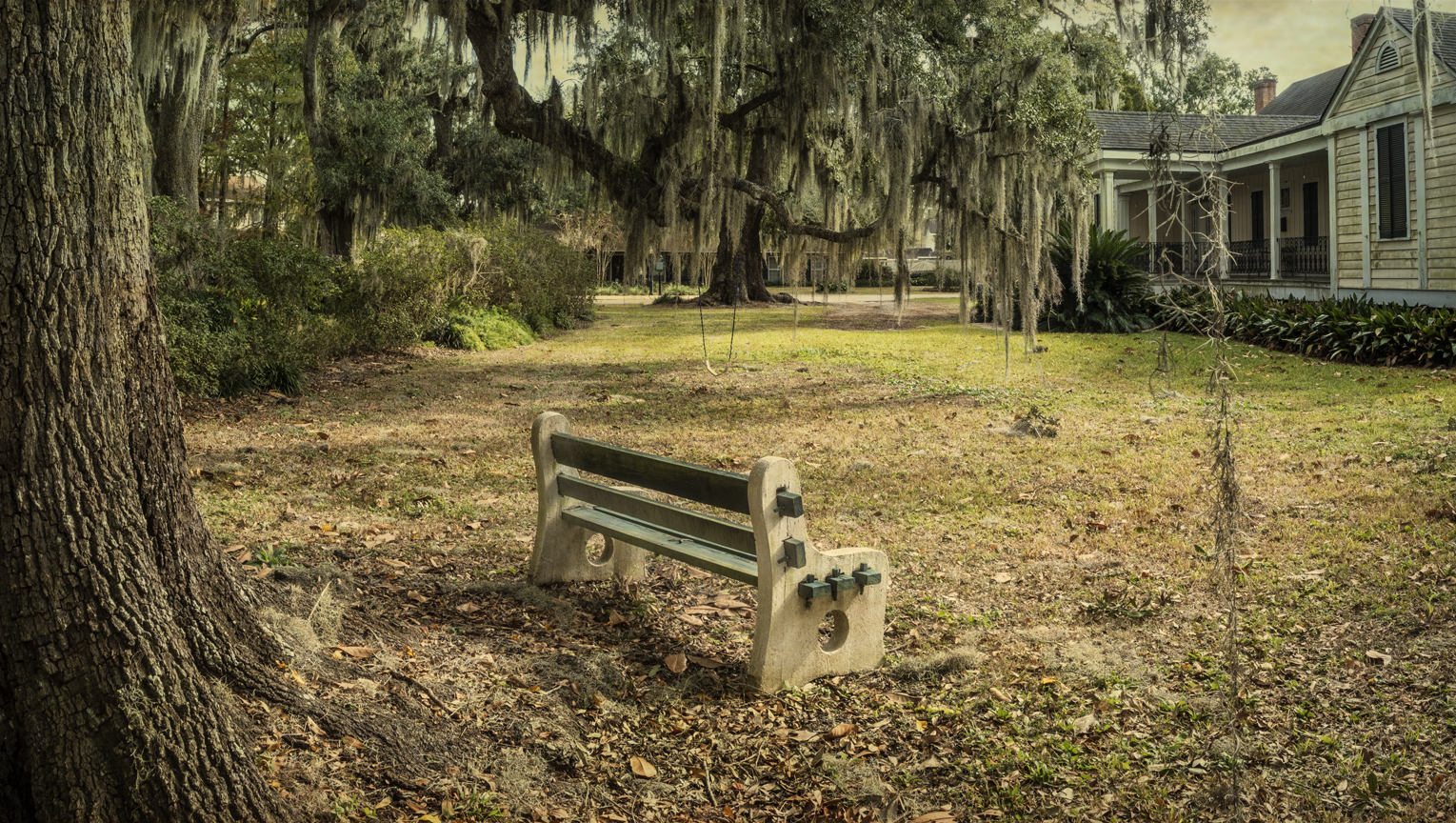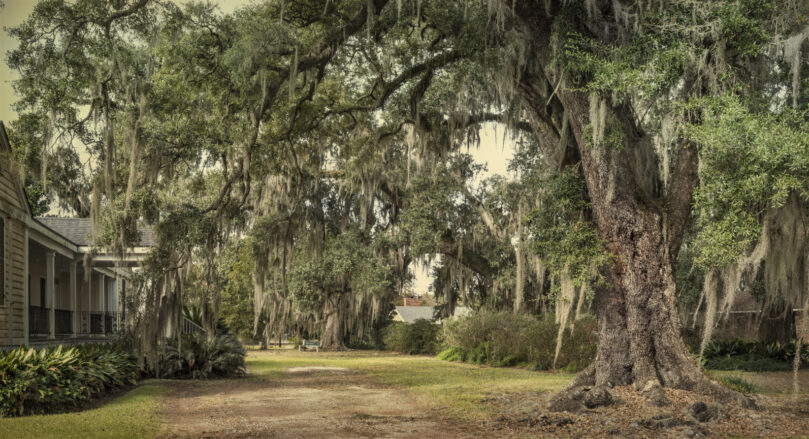(You can find the Ridgefield Plantation home from two directions – from St. Mary Street, turn at the stoplight onto Ridgefield Road and drive approximately 1/4 mile to Young Place. Turn right and then take the first right turn onto Len Street. Len Street curves around to Len Court which ends in a small cul-de-sac. There, you’ll see the tour sign and a historical marker for the plantation home. Or, if you’re coming from the St. Johns Episcopal Church, travel north on Seventh St. from Jackson St. for two long blocks, then turn left on Ridgefield Road. The first right will be Young Place where you’ll turn right onto Len Street.)

Ridgefield Plantation was possibly originally established by George Seth Guion’s father-in-law, his wife Caroline Winder’s step-father. George and Caroline were given the plantation and they settled there in 1831, in a small cottage, after moving to Thibodaux from Mississippi. As his family grew and the plantation thrived, George and Caroline expanded the home and generously donated land along Jackson Street to support the small but growing community of Thibodaux. They donated land for St. John’s Episcopal Church and Cemetery and for Guion Academy, the first free public school in Thibodaux (both were located on land that today faces Jackson street). George was also a co-founder of the University of the South at Sewanee, Tennessee.

The first Ridgefield Plantation home was built in the 1830s by George Seth Guion. His daughter, Caroline Zilpha Guion, eventually inherited the home and married Francis T. Nicholls, the namesake of Nicholls State University in Thibodaux. Nicholls was an attorney, politician, judge, and brigadier general in the Confederate Army during the Civil War. He served two terms as Governor of Louisiana – from 1876 to 1880 and from 1888 to 1892 – and was Chief Justice of the Louisiana Supreme Court from 1892 to 1911. He died at his Ridgefield Plantation home and is buried in St. John’s Episcopal Church Cemetery.

Though the original Ridgefield Plantation home burned in 1940, it was replaced by an exact replica and is now privately owned. Some of the oaks around the Ridgefield home date back to the 1830’s when the original home was constructed. The large oak near the entrance to the cul-de-sac drive (photo above) is more than 24 feet in circumference (300+ plus years of age).
The land that once was Ridgefield Plantation now makes up several residential neighborhoods and commercial properties on both sides of Ridgefield Road. A few of the oldest oaks that once graced the plantation are scattered around these neighborhoods.
The Lafourche Live Oak Tour was created through the generous support of Louisiana’s Cajun Bayou Tourism. For more information on Lafourche Parish events and activities, visit their website at LACajunBayou.com.


It was amazing driving from St. Mary through all those ancient oaks to the house. I lived here the year before all the oaks were cut down from the house up to St. Mary (1965). Instead there is an unnecessarily giant concrete parking lot and strip mall.
Very nice blog yyou have here